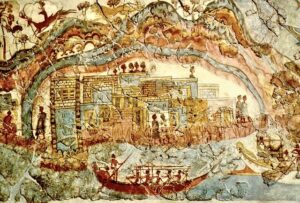
It would be no exaggeration to say that this ancient city could be described as the Pompeii of Bronze Age Greece. Devastated during the massive eruption of the Thera volcano in the 16th century BCE, like the cities of Pompeii and Herculaneum in present-day Italy many centuries later, it was destroyed yet miraculously preserved, as if frozen in time. Excavated thousands of years after the Thera eruption, it has joined the world’s short-list of the most spectacular archaeological discoveries of all time….
Akrotiri of Thera
The Mediterranean Greek island of Santorini, anciently known as Thera, hosts an estimated 2 million visitors a year. As an island in the southern Aegean Sea, it lies about 120 miles southeast of the Greek mainland. It is the largest island within an archipelago of the Cyclades, a group of islands south of Greece and north of Crete. It is best known for its volcanic history, and the great, water-filled caldera that bestows the location its defining characteristic. It is also known for its many attractions as a tourist destination, but perhaps most fascinating of all are the incredible archaeological remains of the nearly 7,000-year-old settlement of Akrotiri, the center of a maritime Cycladic civilization that flourished most prominently during the 16th century BCE. Trade relations established with other Aegean cultures and civilizations that ringed the Mediterranean proved to be the engine of its growth, especially that of the copper trade. It became an important center for processing copper, based on the artifacts discovered at the site. The city prospered as a major center for at least 500 years. Excavations have revealed—along with thousands of artifacts—paved streets, an extensive drainage system, sophisticated pottery, and a masterful array of some of the earliest fresco wall paintings of the Bronze Age. In fact, the culture of Akrotiri was so sophisticated for its time that some historians and scholars have attributed the ancient city as a possible historic basis for the later legend of Plato’s lost Atlantis. The city came to its end between 1620 and 1530 BCE with the eruption of the Thera volcano.
Here is a sneak peek of some of the images you will see in a forthcoming photographic pictorial of the ancient site’s stunning remains….
______________________________
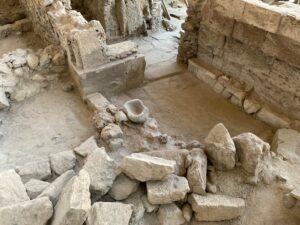
______________________________
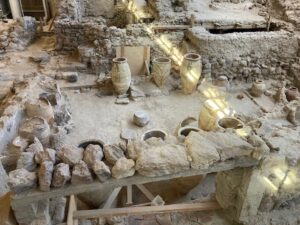
______________________________
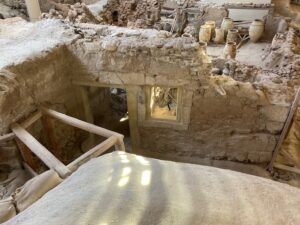
______________________________
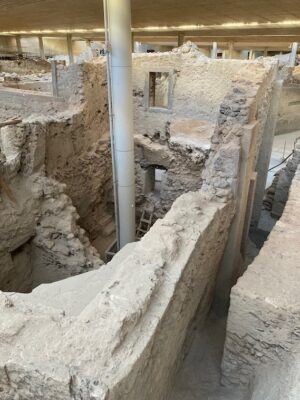
______________________________
Top Image: Minoan fresco of a maritime scene at Akrotiri. Public Domain, Wikimedia Commons
Advertisement





